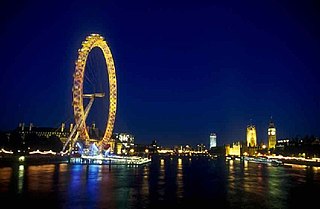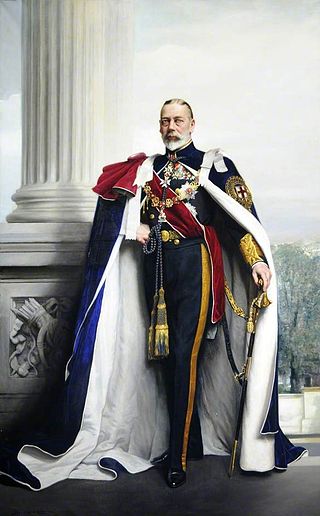
The formal jubilees of British monarchs started with George III. At the start of the 50th year of his reign, his jubilee was celebrated throughout the British Isles and his colonial possessions. Later monarchs added other jubilee years. [1]

The formal jubilees of British monarchs started with George III. At the start of the 50th year of his reign, his jubilee was celebrated throughout the British Isles and his colonial possessions. Later monarchs added other jubilee years. [1]
| Year | Jubilee | Notes | Medal(s) |
|---|---|---|---|
| 1809 | Golden Jubilee of George III | The first British monarch to mark a jubilee in a significant way was King George III. The Golden Jubilee of George III on 25 October 1809 marked the forty-ninth anniversary of his accession and his entrance into the 50th year of his reign. | King George III Jubilee Medal |
| Year | Jubilee | Notes | Medal(s) |
|---|---|---|---|
| 1887 | Golden Jubilee of Queen Victoria | The Golden Jubilee of Queen Victoria was celebrated on 20 June 1887 on the occasion of the 50th anniversary of Queen Victoria's accession on 20 June 1837. | |
| 1897 | Diamond Jubilee of Queen Victoria | The Diamond Jubilee of Queen Victoria began on Sunday, 20 June 1897, the 60th anniversary of her accession to the throne. Celebrations to honour the grand occasion — the first Diamond Jubilee of any British monarch — showcased the Queen's role as 'mother' of the British Empire and its Dominions. | |
| Year | Jubilee | Notes | Medal(s) |
|---|---|---|---|
| 1935 | Silver Jubilee of George V [3] | The Silver Jubilee of George V was celebrated on 6 May 1935 to mark 25 years of King George V as the King of the United Kingdom and the British Dominions, and Emperor of India. It was the first ever Silver Jubilee celebration of any British monarch in history. [4] | |
The first Jubilee-like celebration for Queen Elizabeth II was in 1962, as it marked her 10th anniversary on the throne. [5] The Royal Mint also released a number of sovereigns, bearing the ‘Young Head’ portrait of The Queen by Mary Gillick in 1962, to mark the milestone. [6]
Queen Elizabeth II's jubilees are listed below:
| Year | Jubilee | Notes | Medal(s) |
|---|---|---|---|
| 1977 | Silver Jubilee of Elizabeth II | The Silver Jubilee of Elizabeth II in 1977 marked the 25th anniversary of her accession to the thrones of the United Kingdom and other Commonwealth realms. | |
| 1992 | Ruby Jubilee of Elizabeth II | The Ruby Jubilee of Elizabeth II in 1992 marked the 40th anniversary of her accession to the thrones of the United Kingdom and other Commonwealth realms. Contrary to her Silver Jubilee in 1977, the Ruby Jubilee was a low-profile event. | None |
| 2002 | Golden Jubilee of Elizabeth II | The Golden Jubilee of Elizabeth II was held in 2002 marking the 50th anniversary of her accession. Despite the deaths of her sister, Princess Margaret, and mother, Queen Elizabeth The Queen Mother, in February and March 2002 respectively, the jubilee was marked with large-scale and popular events throughout London and the Commonwealth realms. | |
| 2012 | Diamond Jubilee of Elizabeth II | The Diamond Jubilee of Elizabeth II marked the 60th anniversary of the accession. | |
| 2017 | Sapphire Jubilee of Elizabeth II | The Sapphire Jubilee of Elizabeth II on 6 February 2017, marked 65 years of her reign. She was the first British monarch to have a Sapphire Jubilee. | None |
| 2022 | Platinum Jubilee of Elizabeth II | The Platinum Jubilee of Elizabeth II was celebrated in 2022 to mark the 70th anniversary of her accession. This was the first time any British monarch had celebrated a Platinum Jubilee. | |

A golden jubilee marks a 50th anniversary. It variously is applied to people, events, and nations.

A diamond jubilee celebrates the 60th anniversary of a significant event related to a person or the 60th anniversary of an institution's founding. The term is also used for 75th anniversaries, although the human lifespan makes this usage more common for institutions.

The half sovereign is a British gold coin denominated at one-half of a pound sterling. First issued in its present form in 1817, it has been struck by the Royal Mint in most years since 1980 as a collector's and bullion piece.

The King's Official Birthday is the selected day in most Commonwealth realms on which the birthday of the monarch is officially celebrated in those countries. It does not necessarily correspond to the date of the monarch's actual birth.

The Gold State Coach is an enclosed, eight-horse-drawn carriage used by the British royal family. Commissioned in 1760 by Francis Rawdon-Hastings, 1st Marquess of Hastings for King George III, and designed by Sir William Chambers, it was built in the London workshops of Samuel Butler. It was commissioned for £7,562. It was built for George III's coronation in 1761, but was not ready in time; it was completed in 1762.

The Silver Jubilee of Elizabeth II marked the 25th anniversary of the accession of Queen Elizabeth II on 6 February 1952. It was celebrated with large-scale parties and parades throughout the United Kingdom and the Commonwealth throughout 1977, culminating in June with the official "Jubilee Days", held to coincide with the Queen's Official Birthday. The anniversary date itself was commemorated in church services across the land on 6 February 1977, and continued to be for the rest of that month. In March, preparations started for large parties in every major city of the United Kingdom, as well as for smaller ones for countless individual streets throughout the country.

The Golden Jubilee of Elizabeth II was the international celebration held in 2002 marking the 50th anniversary of the accession of Queen Elizabeth II on 6 February 1952. It was intended by the Queen to be both a commemoration of her 50 years as monarch and an opportunity for her to officially and personally thank her people for their loyalty.
Canadian royal symbols are the visual and auditory identifiers of the Canadian monarchy, including the viceroys, in the country's federal and provincial jurisdictions. These may specifically distinguish organizations that derive their authority from the Crown, establishments with royal associations, or merely be ways of expressing loyal or patriotic sentiment.

The monarchy of Jamaica is a system of government in which a hereditary monarch is the sovereign and head of state of Jamaica. The current Jamaican monarch and head of state, since 8 September 2022, is King Charles III. As sovereign, he is the personal embodiment of the Jamaican Crown. Although the person of the sovereign is equally shared with 14 other independent countries within the Commonwealth of Nations, each country's monarchy is separate and legally distinct. As a result, the current monarch is officially titled King of Jamaica and, in this capacity, he and other members of the royal family undertake public and private functions domestically and abroad as representatives of the Jamaican state. However, the monarch is the only member of the royal family with any constitutional role.

The Diamond Jubilee of Queen Victoria was officially celebrated on 22 June 1897 to mark the occasion of the 60th anniversary of Queen Victoria's accession on 20 June 1837. Queen Victoria was the first British monarch ever to celebrate a Diamond Jubilee.

The year 2012 marked the Diamond Jubilee of Elizabeth II being the 60th anniversary of the accession of Queen Elizabeth II on 6 February 1952. The only diamond jubilee celebration for any of Elizabeth's predecessors was in 1897, for Queen Victoria.

The Sapphire Jubilee of Elizabeth II on 6 February 2017, marked 65 years of Queen Elizabeth II's reign. The longest-reigning monarch in British history, Elizabeth II was the first British monarch to have a sapphire jubilee.

The double sovereign is a gold coin of the United Kingdom with a face value of two pounds sterling (£2). Rarely issued in the first 150 years after its debut in 1820, it never had a significant presence in circulation. It became a collector and bullion coin, and has been struck most years since 1980. It features the reigning monarch on its obverse and, most often, Benedetto Pistrucci's depiction of Saint George and the Dragon on the reverse.

The Ruby Jubilee of Elizabeth II in 1992 marked the 40th anniversary of the accession of Queen Elizabeth II on 6 February 1952. Contrary to her Silver Jubilee in 1977, it was not regarded as an "official" jubilee. However, the milestone was marked with a number of events and community projects.

The Platinum Jubilee of Elizabeth II was the international celebration in 2022 marking the 70th anniversary of the accession of Queen Elizabeth II on 6 February 1952. It was the first time that any monarch in British history celebrated a platinum jubilee, as is the case in the histories of the other Commonwealth realms.

The Queen Elizabeth II Platinum Jubilee Medal or the Queen's Platinum Jubilee Medal is a commemorative medal created in 2022 to mark the 70th anniversary of Queen Elizabeth II's accession in 1952.

The Silver Jubilee of George V on 6 May 1935 marked 25 years of George V as the King of the United Kingdom and the British Dominions, and Emperor of India. The Jubilee was marked with large-scale and popular events throughout London and the rest of the United Kingdom in May 1935. It was the first ever Silver Jubilee celebration of a British monarch in history. The King died less than a year later.

The Golden Jubilee of George III, also known as the Grand National Jubilee, on 25 October 1809 marked 49 years of King George III's accession to the British throne, and his entrance into the 50th year of his reign. It was the first of such festivities to be celebrated in a significant way in the United Kingdom and the Colonies. The celebrations were relatively limited compared to the jubilees of some of the ensuing British monarchs.
The Platinum Jubilee Act of Loyalty Parade was a military parade held at the Palace of Holyroodhouse in Edinburgh, Scotland on 28 June 2022, organised as part of the Queen's Platinum Jubilee celebrations. Performed as a tribute to the Queen as Head of the British Armed Forces, on behalf of all three branches of the British Armed Forces, it featured all three services, with each of the single service Senior Representatives in Scotland present, together with Service Cadets.